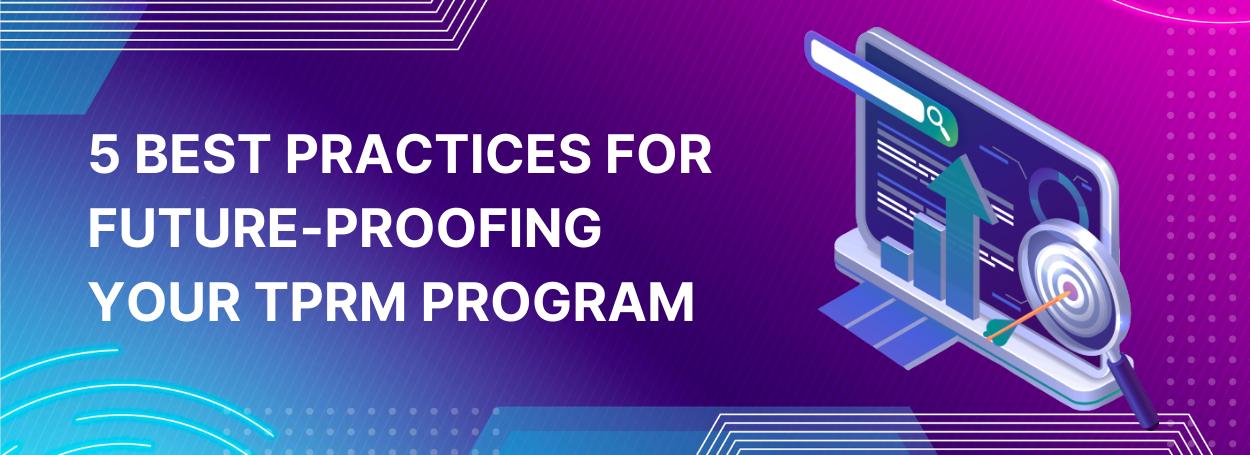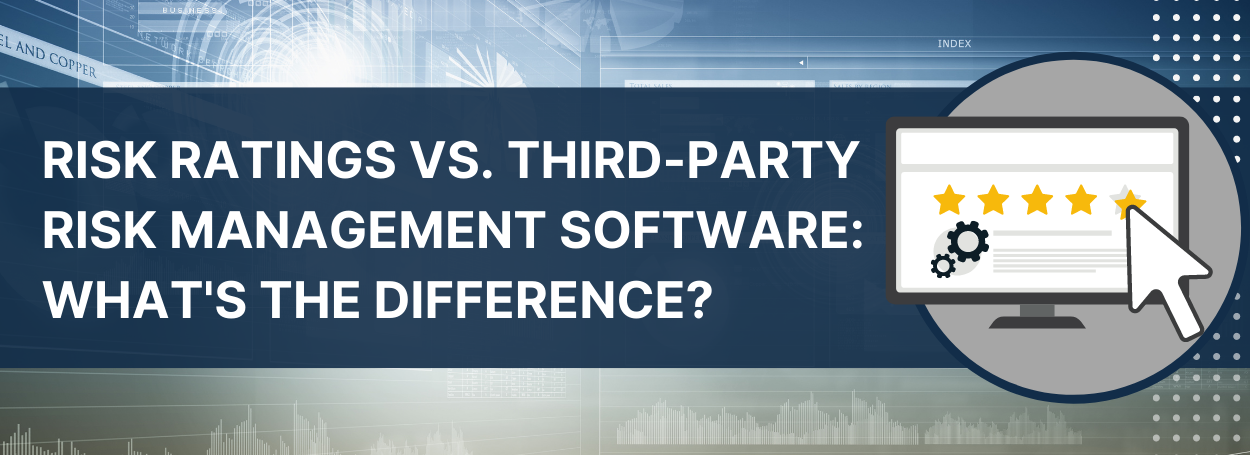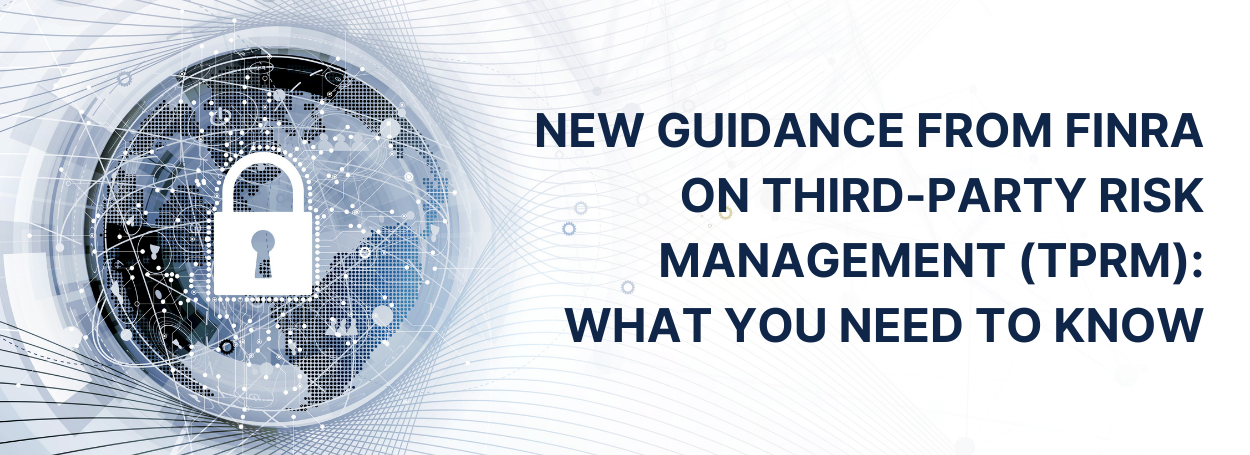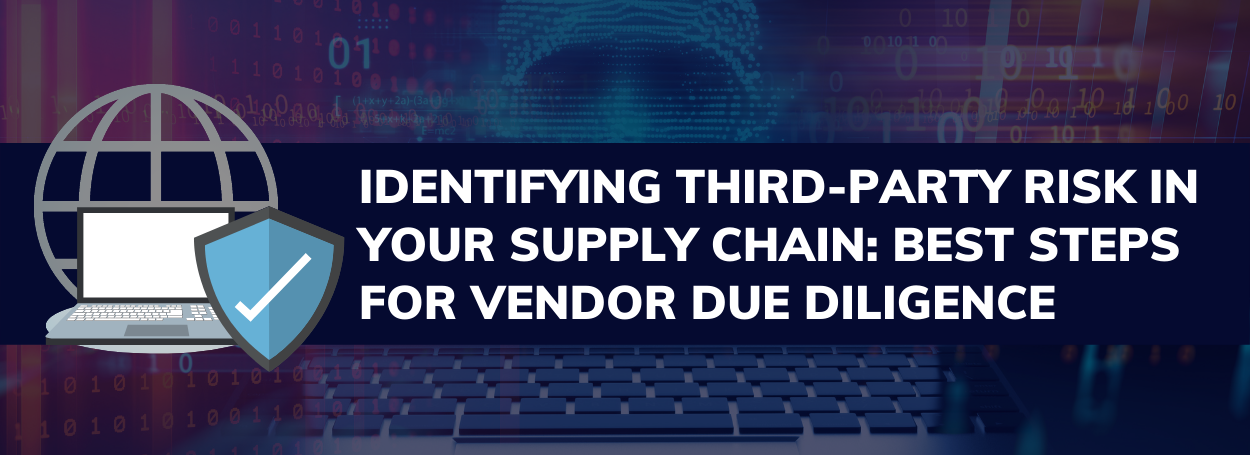5 Best Practices for Future-Proofing Your TPRM Program

Almost every organization now outsources some portion of its operations. However, it is becoming difficult for businesses to guarantee that third-party suppliers remain a source of strength rather than a weak link for their business.
Third-party risks are possible exposures that might arise from a third-party engagement, such as data breaches, noncompliance, or business interruption. It’s imperative to address these risks with robust risk management programs to protect your organization.
To complicate matters, the pandemic has compelled many businesses to rely on software-as-a-service (SaaS) and platform-as-a-service (PaaS) solutions to shift their operations to a remote environment, increasing their reliance on third-party service providers.
So, how can you protect your company and its stakeholders while taking advantage of the benefits of third-party relationships?
What Is Third-Party Risk Management (TPRM)?
Third-party risk management (TPRM) is also known as vendor risk management (VRM). It discovers, analyzes, and manages possible risks posed by a company’s third-party partnerships.
A third party is any individual or entity outside your organization’s management that influences your business operations.
Third-party organizations, whether they are information controllers, service providers, suppliers, or vendors, can offer significant operational benefits as well as considerable risk exposure to a company.
TPRM enables businesses to see which providers adhere to information security, compliance, and data privacy requirements and which don’t.
Why Do You Need a Third-Party Risk Management Framework?
Third-party risk management frameworks give your business consistent decision-making criteria, reducing the effort and time required to manage third-party vendor risk. Ultimately, you will save your company money, protect your reputation, and improve stakeholder communication.
Recent Changes in Third-Party Risk
Many factors contribute to organizations’ evolving and shifting dangers when dealing with third-party providers. Here are some of them:
Increased Reliance on Third-Party Software
Many companies employ payroll, customer relationship management, and email marketing tools that are widely available to avoid the need for in-house software development. As a result, organizations rely on software providers for robust cybersecurity controls and logical features for segregation of duties.
Increased Dependence on Consultants
Organizations may rely on various consultants and collaborators to get things done, including partners, suppliers, vendors, and contractors. Each interaction involves sharing and exchanging information, thereby increasing the attack surface for cybercriminals.
Increased Regulatory Requirements
Regulators have increased requirements for vendor risk assessments and ongoing monitoring of third-party relationships. Especially in financial services and healthcare, data protection and data privacy are of utmost concern. Fines for regulatory offenses can exceed hundreds of millions in certain circumstances.
In addition, penalties frequently result in unfavorable reputational damage to a brand, which can be more challenging to repair than financial damages. Moreover, third-party risk is regarded as a top strategic risk as boards of directors are more worried about how their businesses handle risk management processes.
What Are the Most Common Third-Party Risks?
Organizations rely heavily on third-party vendors, suppliers, and partners to help them meet the demands of their customers and keep their day-to-day operations working.
Unfortunately, these third-party agreements introduce the risk of third-party cyberattacks, which businesses must continually combat to avoid losing control of sensitive information, networks, or intellectual property.
Let’s look more closely at some of the most frequent third-party hazards.
Cybersecurity Risks
Attackers infiltrate supply-chain networks, stealthily infecting software, systems, and devices. The attacker then uses the third party as a “platform” to launch assaults on higher-value targets.
Through the corrupted IT infrastructure of your third parties, hackers can conduct attacks that enable the theft of credentials from individuals within the vendor’s company with access to your systems or directly from your personnel.
Compliance and Regulatory Risks
This type of risk is typically created by a failure of third-party security control, which results in data loss and a data privacy breach, exposing the primary organization. Although they may not be directly at fault, the primary organization is accountable for the security of the third parties they do business with.
Such dangers are a severe issue for modern organizations, as a third party is now involved in 80% of data breaches. Moreover, third parties’ violations of environmental, social, and governance (ESG) or labor rules may also pose a regulatory risk.
Financial Risks
A third-party activity triggering a halt in operations raises operational risks. For example, a supplier that is the victim of a network assault or natural disaster may cause unexpected downtime, temporarily halting corporate operations.
Reputational Risks
Negative public opinion caused by publicly disclosed security breaches, legal infractions, or poor customer interactions raises reputational risks. Likewise, you jeopardize your reputation when you work with a third party with poor labor standards or mistreat its employees.
Third-Party Risk Management Best Practices
The third-party risk management and vendor due diligence practices are designed to assist your business in proactively identifying, remediating, and managing vendor risks. To enhance your TPRM program, you can follow these five best practices:
Framework Identification
As a preliminary stage, businesses must define the problem that the process will address. This entails following a framework or collection of regulations that identify risk management and compliance duties.
Your industry will often dictate the standards you must follow. In healthcare, you must adhere to HIPAA (Health Insurance Portability and Accountability Act) regulations. GDPR (General Data Protection Regulation) applies if you do business with European citizens.
You may also consider the NIST (National Institute of Standards and Technology) Cyber Security Framework or universal screening tools like the Standardized Information Gathering (SIG) questionnaire.
Technology Usage
These procedures usually include manual operations such as vendor risk teams exchanging questionnaires and spreadsheets with suppliers and then completing an unstructured evaluation. While these procedures may be simpler and less expensive to establish in the short term, they are frequently unsustainable in the long run.
Using a digital platform enables businesses to create a standardized procedure that can be followed, scaled, and reported. Even then, there is a range of software solutions to consider. Risk ratings vs. third-party risk management tools offer varying degrees of automation and analysis. It’s critical to investigate the best solution for your business.
Effective third-party risk management tools provide automation for questionnaires, workflows, and real-time reporting. Your organization will be able to streamline processes to save time and improve consistency.
Furthermore, these systems offer higher transparency among stakeholders when reviewing current vendor rosters and qualities. For example, if a particular software platform suffers a significant breach, having a centralized list of suppliers enables an organization to query for every vendor who may be using that software for quicker remediation.
Formalization of Decision Criteria, Rules, and Responsibilities
Many risk management systems are guided by policies that outline the expected objectives but do not include a more formal assignment of roles, duties, and regulations. As a result, organizations must determine who is responsible and accountable for the process and who should be consulted or notified of modifications and ongoing outcomes.
Although there’ll always be a need to undertake risk-based decisions and a willingness to take risks depending on the effect or possibility of the risk, businesses must specify the fallback decision criteria that will be used.
This may entail assigning quantitative risk to each character in a vendor questionnaire at the outset.
The protocol should specify when specific scores or certain replies necessitate escalation or the examination of additional persons or teams and the acceptable levels of the possibility of a risk event occurring and the impact on the company.
Collaboration
Third-party risk is ever-changing and unpredictable. Therefore, you must conduct ongoing monitoring and convey the program’s progress to organizational stakeholders.
Having real-time information in one place that is easily accessible helps stakeholders find areas for efficiency and cost savings by combining operations with fewer providers while also decreasing risk.
Development of Onboarding Processes
Just like you have an onboarding procedure for new workers to familiarize them with your company’s standards, you should design a consistent vendor onboarding process for your third parties. During the onboarding process, you’ll want to ensure that suppliers understand your infosec guidelines and commit to following them.
The Future of Third-Party Risk Management
More and more corporations will be implementing increasingly formal and robust third-party risk management standards and audit programs for their partners and vendors in the coming years. These evaluations are time-consuming, but they provide greater security and risk mitigation than a simple questionnaire or casual discussion.
Likewise, you must be ready to react to these sorts of examinations if you are selling a software package or handling sensitive customer data. To fulfill your clients’ expectations, you might have to undertake a lengthy vendor due diligence questionnaire and provide evidence of compliance with certifications such as SOC 2 or ISO 27001.
As third-party risk management grows, companies will need to identify and implement the appropriate technologies to manage complexities while keeping costs in mind.
How CENTRL’s Vendor360 Helps You Future-Proof Your TPRM Strategy
Vendor360 is the optimal solution for the total lifecycle of third-party vendor management.
You can customize it from vendor onboarding to offboarding to match your organization’s specific business, security, and compliance requirements. Vendor360 provides supply chain partners with the tools to respond quickly to risks and threats.
Advanced features include dispute checks, remediation workflows, and issuing non-disclosure agreements. Suppliers are able to respond to requests for proposals and highly-tailored tech risk evaluations. In addition, Vendor 360 consolidates and automates contract development, approvals, and risk assessments.
Vendor 360 enables you to gather real-time key performance indicators, consolidate payments, minimize the loss of essential services due to non-payment, and obtain global supervision of all vendor relationships to manage costs better and remove duplicate services. You can also get extensive and actionable insights into vendor risk trends.
Book a demo to discover other ways Vendor360 can help you future-proof your third-party risk management!


